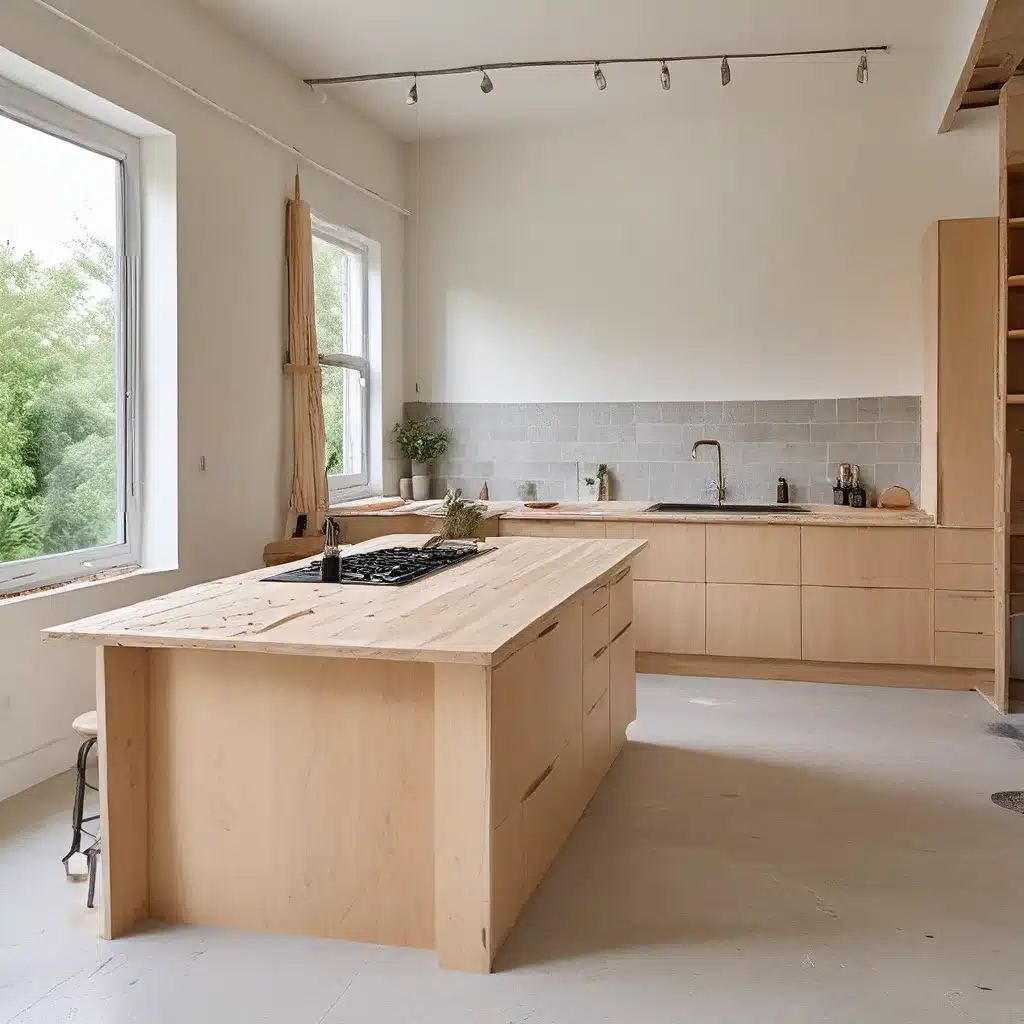
Ah, the joys of home renovation – the endless paint swatches, the back-and-forth over tile patterns, the thrill of finding the perfect lighting fixture. But amidst all the excitement, have you ever stopped to consider the environmental impact of your home improvement projects? I know, I know, it’s not the sexiest topic, but trust me, it’s important.
The Green Home Makeover Dilemma
You see, I’ve always been a bit of a sustainability nut. Ever since I started my own general contracting business, Reading General Contractor, I’ve been on a mission to help my clients find eco-friendly solutions for their home renovations. And let me tell you, it’s not always easy.
Initially, a lot of my clients were hesitant. They’d say things like, “But won’t sustainable options be more expensive?” or “I don’t want my home to look like a hippie commune, you know?” And I get it – the idea of “going green” can seem daunting, especially when you’re knee-deep in design decisions and trying to stay on budget.
However, I’m here to tell you that sustainable home improvements don’t have to break the bank, and they certainly don’t have to sacrifice style. In fact, with a little bit of research and creativity, you can transform your space into an eco-friendly oasis that’s both beautiful and kind to the planet.
Eco-Friendly Swaps for Every Room
Let’s start with the easiest and most budget-friendly eco-friendly swap: LED light bulbs. I can’t tell you how many times I’ve walked into a home and seen those old-school incandescent bulbs still hanging around. Sure, they might be a bit cheaper upfront, but in the long run, LEDs are where it’s at. Not only do they use up to 80% less energy, but they also last way longer, which means fewer trips to the hardware store. Plus, the technology has come a long way, and you can now find LED bulbs in a variety of shapes, sizes, and color temperatures to suit any decor.
Another low-hanging fruit is upgrading your windows. According to the U.S. Department of Energy, about 25% of home energy is lost through windows. That’s a lot of wasted money and resources! By investing in energy-efficient, dual-paned windows, you can significantly reduce your heating and cooling costs while also cutting down on your carbon footprint. And the best part? Many utility companies offer rebates and tax credits to help offset the initial cost.
As Forbes Home points out, one of the most impactful eco-friendly home improvements you can make is switching to a tankless water heater. These on-demand systems heat water as it’s needed, rather than constantly maintaining a storage tank, which can save you a ton of energy (and money) over time. Sure, the upfront investment is higher than a traditional tank heater, but the long-term benefits are well worth it.
Sustainable Showstoppers
Now, let’s talk about some of the more substantial (and admittedly, more exciting) eco-friendly home improvements. If you’re in the market for new appliances, be sure to look for the Energy Star certification. These products have been rigorously tested and approved by the U.S. Department of Energy for their energy efficiency. From refrigerators and ovens to washing machines and dryers, there are tons of high-performing, sustainable options that can help you cut down on your utility bills and your environmental impact.
And speaking of cutting down, have you considered a high-efficiency fireplace? Believe it or not, your cozy wood-burning fireplace might be doing more harm than good. Traditional fireplaces can actually suck heat right out of your home, negating any warmth they provide. But with a gas or pellet-fueled insert, you can enjoy the ambiance of a fireplace while significantly reducing your energy consumption and emissions.
Last but not least, let’s talk about the crown jewel of sustainable home improvements: solar panels. According to the U.S. Office of Energy Efficiency & Renewable Energy, solar power can reduce greenhouse gas emissions, preserve water, and limit air pollution. And as the technology continues to improve and the costs continue to drop, this is an investment that’s becoming more and more accessible for the average homeowner. Plus, with the various tax credits and incentives available, you might be surprised at how quickly your solar panels can pay for themselves.
Putting It All Together
Now, I know what you’re thinking: “Wow, that’s a lot of information to digest!” And you’re right. Navigating the world of eco-friendly home improvements can be a bit overwhelming at first. But trust me, once you start incorporating these strategies into your renovation plans, it becomes second nature.
The key is to approach each project with an open mind and a willingness to explore sustainable alternatives. Sure, it might take a bit more research and planning upfront, but the long-term benefits to your wallet and the planet are undeniable.
So, the next time you find yourself staring at a sea of paint swatches or agonizing over kitchen cabinet layouts, remember: your home renovation can be a force for good, not just a pretty facelift. With a little bit of eco-friendly know-how, you can turn your humble abode into a shining example of sustainable living.
And who knows, maybe your green-minded home improvements will even inspire your friends and neighbors to follow suit. After all, there’s nothing quite like a little friendly competition when it comes to saving the planet, am I right?
Related posts:
No related posts.




